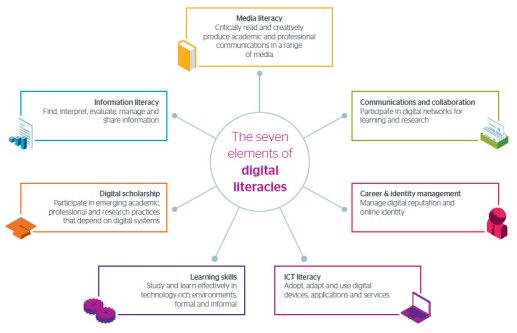Source: Inside Higher Ed by Eric Stoller
One of my favorite examples when describing the versatility of social media is to talk about a Swiss multi-tool. With a wide array of accoutrements, the multi-tool is a great way to frame the many uses of social media within student affairs work. Recently, in a post about “The Rise of the Student Affairs Digital Communicator,” I talked about the evolution of student affairs practitioners in terms of social media fluency and use. After reading that particular post, a faculty member in a higher education / student affairs graduate program contacted me and asked what I would include in a social media / digital communications course for student affairs grads. My answer was broad in scope, and like a Swiss multi-tool, the versatility of social media was represented. In no particular order, and by no means complete, here is the list that I quickly typed up and sent in reply:
Social Data: It’s always useful to know some statistics when it comes to learning about social media. I’m a big fan of the Social Media Update from the Pew Research Center.
Strategic Communications and The Business of Social Media: Digital Communications 101 knowledge, for student affairs work or a business, can be enhanced by checking out these 8 communications resources.
Digital Accessibility: There is so much work that needs to be done to ramp up the overall state of social media accessibility. I would start with learning how to caption/subtitle YouTube videos.
Social Media Metrics: What does success mean in the digital realm? Are you looking for likes, followers, engagement, mentions, page views, etc? Note to self, write up a post in the future on social media metrics. For now, try to avoid vanity metricsand definitely visit Matt Hames’ posts on LinkedIn for some quality writing on digital data.
Social Media Sites & Apps: You’ll never stop learning in the social media arena. Developers keep iterating/creating and audiences shift over time.
Digital Professional Development: Connecting with peers, colleagues, mentors, friends, brands, schools, etc. is a wonderful way to keep informed, ask questions, and grow as a professional. My favorite method is the ubiquitous hashtag on Twitter.
Blogs: I would be remiss if I didn’t include blogs in this list. As digital hubs, content repositories, and engagement platforms, blogs are almost as relevant in 2015 as they were more than a decade ago.
Social Listening: Using social media for engagement is a terrific facet of the various sites/apps that represent the social sphere. However, you can use social media to “listen” for campus themes which can be useful for all sorts of educational initiatives.
Digital Enrollment Management: Needless to say, strategic enrollment management professionals understand the value of strategic social media communications.
Career Development / Digital Identity: Working on establishing a digital presence requires thoughtfulness and fluency. This section could probably be an entire course just by itself.
Digital Advising/Engagement: Learning tips on how to advise and engage via social media seems like an obvious section in an educational landscape that is made up of a variety of learners. For online-only students, social media and digital communications are going to be instrumental in advising, retaining, and supporting individuals who you may never see in-person.
Join the Future EdTech Event taking place in London on 2-3 June 2015.
250+ delegates and 50+ speakers will come together at Future EdTech 2015!






